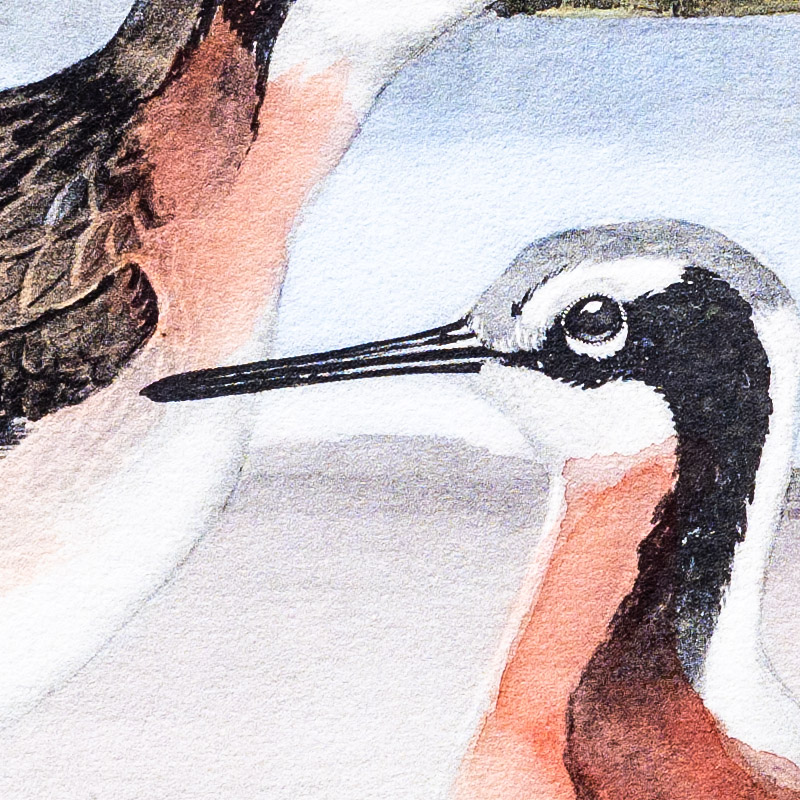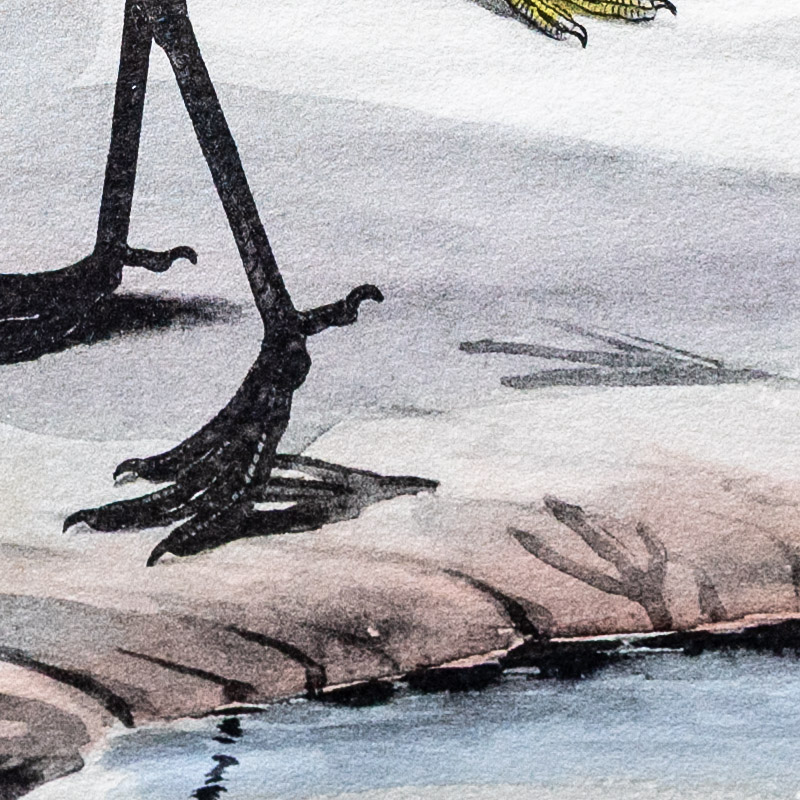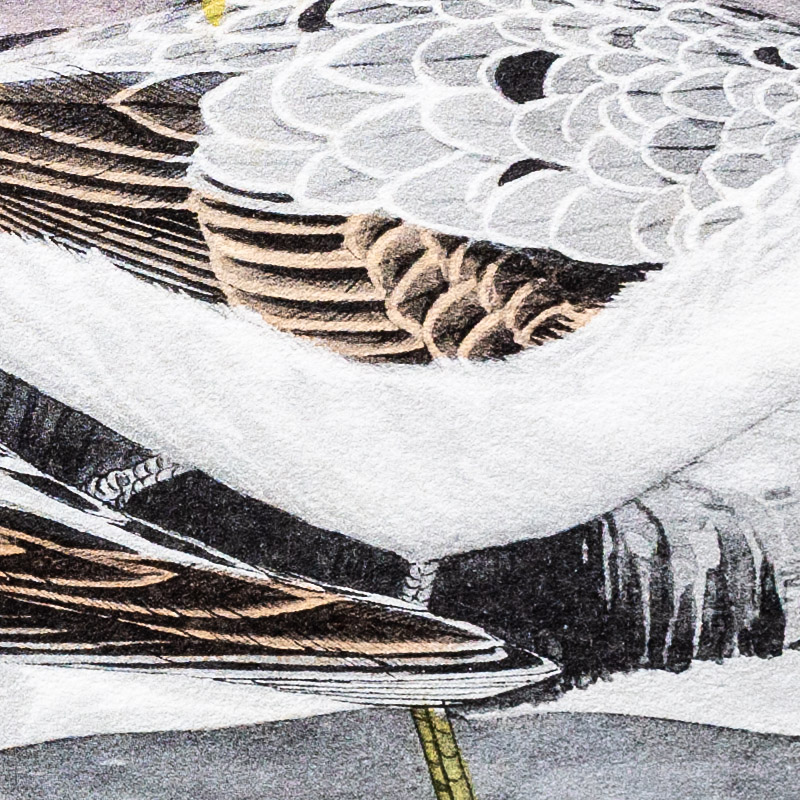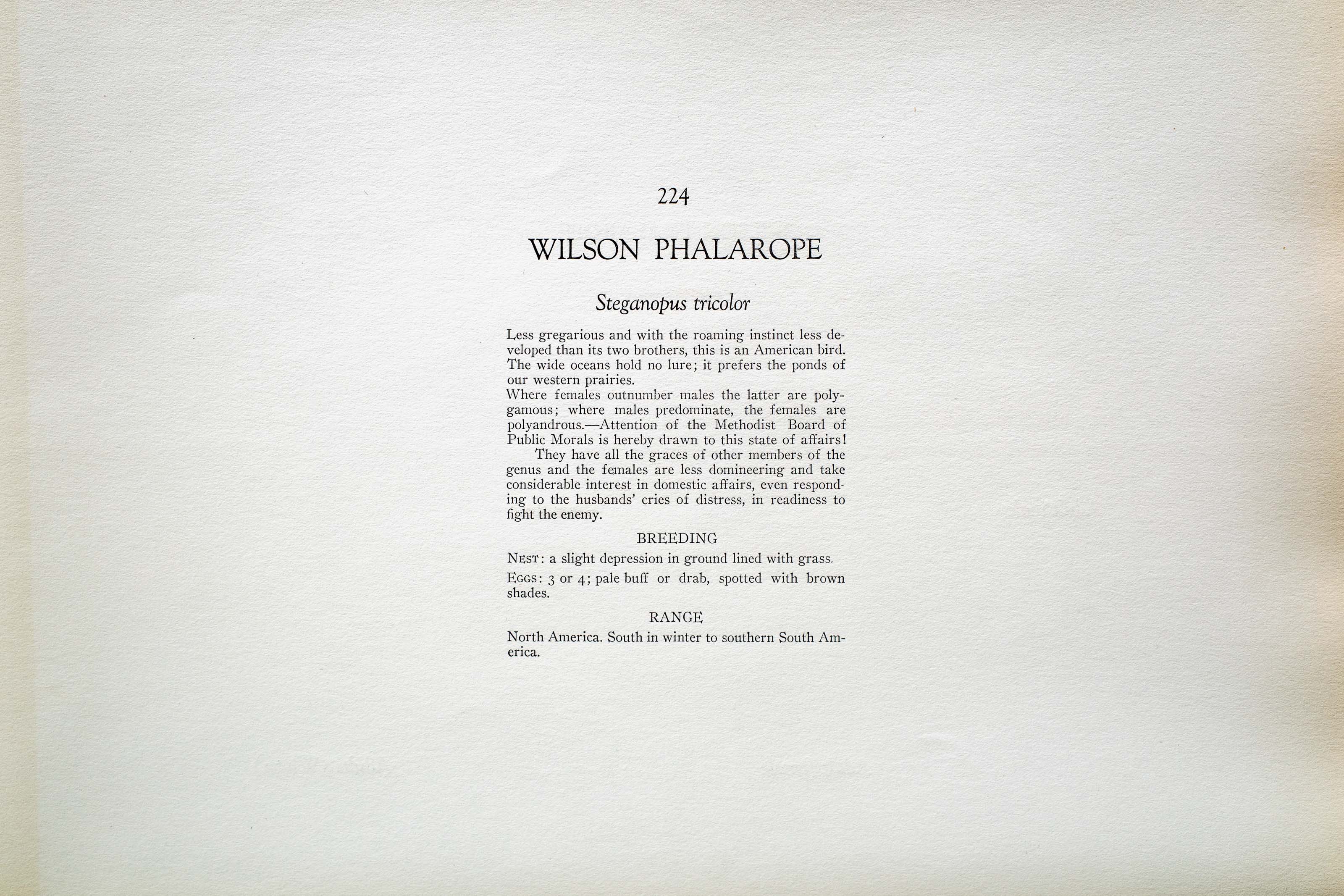






Unknown
1930
4
224
A team of dedicated board members, volunteers, and student interns has published every page in Volume 9. This volume includes 360 images of paintings and lyrical descriptions of birds, now available online for everyone to enjoy anywhere in the world. This is a monumental task. Each volume requires approximately 400 hours to photograph, edit, transcribe, catalog, and publish online. We need your support to complete this work.
If you're tech-savvy, have a good eye, are meticulous with details, and love structured data, please consider volunteering by emailing us at hello@rexbrasher.org.
We encourage all bird lovers and supporters to consider a monetary donation to support our mission to make Rex's work available for everyone. You can provide a one-time or recurring donation online.
Less gregarious and with the roaming instinct less developed than its two brothers, this is an American bird. The wide oceans hold no lure; it prefers the ponds of our western prairies.
Where females outnumber males the latter are polygamous; where males predominate, the females are polyandrous. — Attention of the Methodist Board of Public Morals is hereby drawn to this state of affairs!
They have all the graces of other members of the genus and the females are less domineering and take considerable interest in domestic affairs, even responding to the husbands' cries of distress, in readiness to fight the enemy.
NEST: a slight depression in ground lined with grass.
EGGS: 3 or 4; pale buff or drab, spotted with brown shades.
North America. South in winter to southern South America.